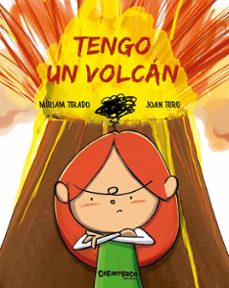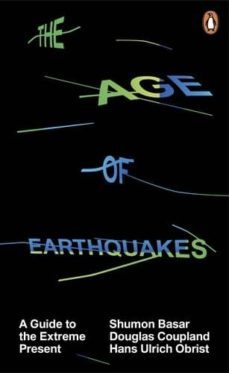Imprescindibles
Ficción
No Ficción
Ciencias y tecnología Biología Ciencias Ciencias naturales Divulgación científica Informática Ingeniería Matemáticas Medicina Salud y dietas Filología Biblioteconomía Estudios filológicos Estudios lingüísticos Estudios literarios Historia y crítica de la Literatura
Humanidades Autoayuda y espiritualidad Ciencias humanas Derecho Economía y Empresa Psicología y Pedagogía Filosofía Sociología Historia Arqueología Biografías Historia de España Historia Universal Historia por países
Infantil
Juvenil
#Jóvenes lectores Narrativa juvenil Clásicos adaptados Libros Wattpad Libros Booktok Libros de influencers Libros de Youtubers Libros Spicy Juveniles Libros LGTBIQ+ Temas sociales Libros ciencia ficción Libros de acción y aventura Cómic y manga juvenil Cómic juvenil Manga Shonen Manga Shojo Autores destacados Jennifer L. Armentrout Eloy Moreno Nerea Llanes Hannah Nicole Maehrer
Libros de fantasía Cozy Fantasy Dark academia Hadas y Fae Romantasy Royal Fantasy Urban Fantasy Vampiros y hombres lobo Otros Misterio y terror Cozy mistery Policiaca Spooky Terror Thriller y suspense Otros
Libros románticos y de amor Dark Romance Clean Romance Cowboy Romance Mafia y amor Romance dramatico Romcom libros Sport Romance Otros Clichés Enemies to Lovers Friends to Lovers Hermanastros Slow Burn Fake Dating Triángulo amoroso
Cómic y manga
Novela gráfica Novela gráfica americana Novela gráfica europea Novela gráfica de otros países Personajes, series y sagas Series y sagas Star Wars Superhéroes Cómics DC Cómics Marvel Cómics otros superhéroes Cómics Valiant
eBooks
Literatura Contemporánea Narrativa fantástica Novela de ciencia ficción Novela de terror Novela histórica Novela negra Novela romántica y erótica Juvenil Más de 13 años Más de 15 años Infantil eBooks infantiles
Humanidades Autoayuda y espiritualidad Ciencias humanas Economía y Empresa Psicología y Pedagogía Filosofía Historia Historia de España Historia Universal Arte Cine Música Historia del arte
Ciencia y tecnología Ciencias naturales Divulgación científica Medicina Salud y dietas Filología Estudios lingüísticos Estudios literarios Historia y crítica de la Literatura Estilo de vida Cocina Guías de viaje Ocio y deportes
SHUMON BASAR
Recibe novedades de SHUMON BASAR directamente en tu email
Filtros
Del 1 al 3 de 3
EDITORIAL GG 9788425220425
With the Republic of Slovenia declaring its independence from Yugoslavia in 1991 Slovenia became an honourable member of the world of late capitalism, and in 2004 a member of the European Union. It would take too long to explain in detail why Slovenia became a successful member of the empire of late capitalism, but what can be said of architecture is that several young architects such as Spela Videcnik and Rok Oman of Ofis arhitekti became familiar with the blurring of the distinctions between art, fashion, high and low culture, design and politics, individualisation, and consumption. Not only Ofis, but other young architects oriented themselves to the West and decided early on in their careers to study architecture in post-Fordist countries like Great Britain, the USA, Holland and Finland, thus making the leap from a Communist welfare state into a late-capitalist state -with the help of their international aesthetics- easier and more promising for Slovenia. From that moment on, a new generation of architects paved the way for Slovenia to move into world capitalism. The work by Ofis compiled in this issue of 2G represents a good example of this new generation of architects from Eastern Europe.
Ver más
Tapa blanda
PENGUIN 9780141979564
Planet Earth needs a self-help book, and this is it.The future is happening to us far faster than we thought it would and this book explains why.Fifty years after Marshall McLuhan's ground breaking book on the influence of technology on culture The Medium is the Massage, Shumon Basar, Douglas Coupland and Hans Ulrich Obrist extend the analysis to today, touring the world that's redefined by the Internet, decoding and explaining what they call the 'extreme present'.The Age of Earthquakes is a quick-fire paperback, harnessing the images, language and perceptions of our unfurling digital lives. The authors invent a glossary of new words to describe how we are truly feeling today; and 'mindsource' images and illustrations from over 30 contemporary artists. Wayne Daly's striking graphic design imports the surreal, juxtaposed, mashed mannerisms of screen to page. It's like a culturally prescient, all-knowing email to the reader: possibly the best email they will ever read.Welcome to The Age of Earthquakes, a paper portrait of Now, where the Internet hasn't just changed the structure of our brains these past few years, it's also changing the structure of the planet. This is a new history of the world that fits perfectly in your back pocket.
Ver más
Tapa blanda
Del 1 al 3 de 3
























